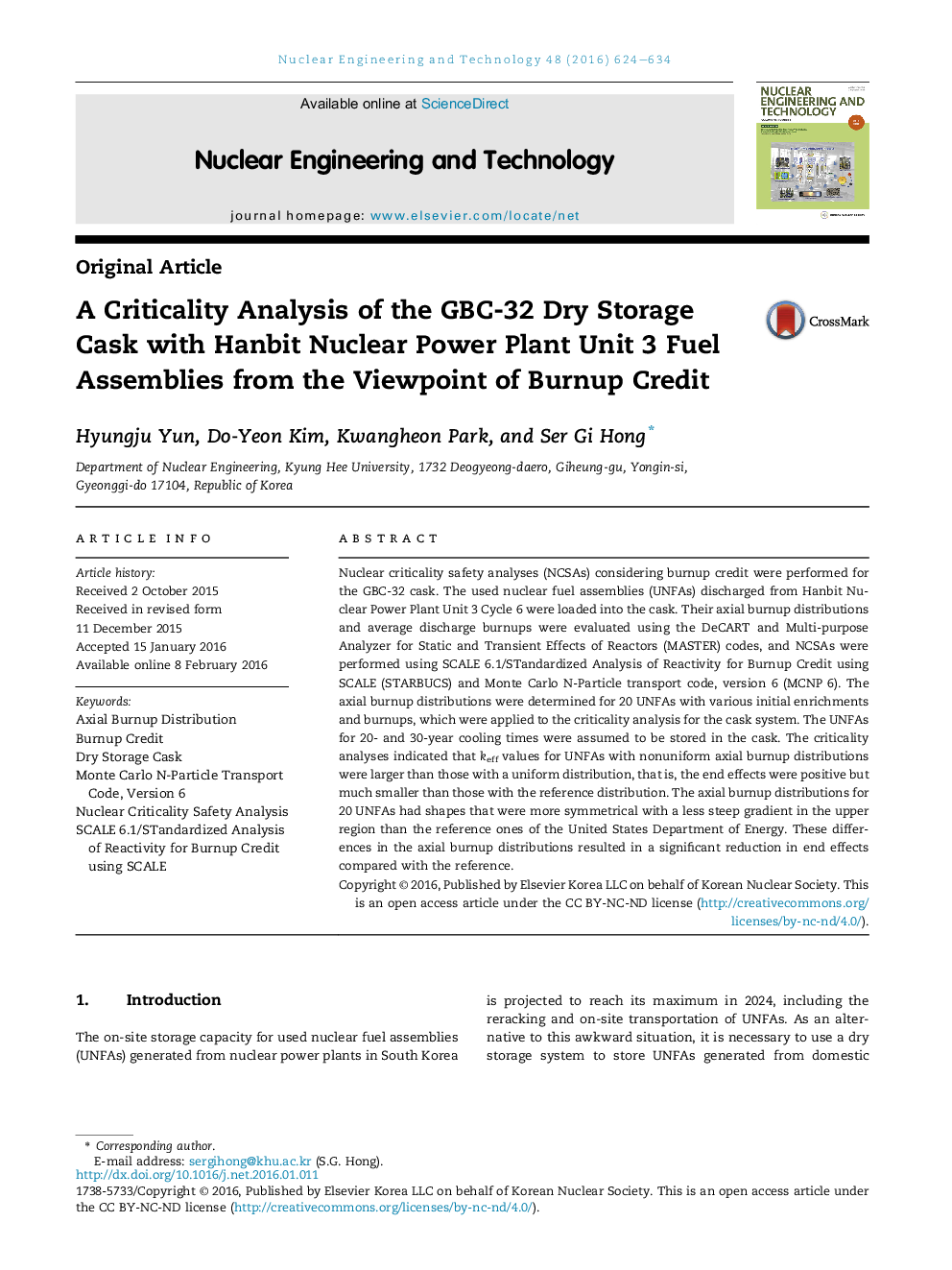| Article ID | Journal | Published Year | Pages | File Type |
|---|---|---|---|---|
| 1739853 | Nuclear Engineering and Technology | 2016 | 11 Pages |
Nuclear criticality safety analyses (NCSAs) considering burnup credit were performed for the GBC-32 cask. The used nuclear fuel assemblies (UNFAs) discharged from Hanbit Nuclear Power Plant Unit 3 Cycle 6 were loaded into the cask. Their axial burnup distributions and average discharge burnups were evaluated using the DeCART and Multi-purpose Analyzer for Static and Transient Effects of Reactors (MASTER) codes, and NCSAs were performed using SCALE 6.1/STandardized Analysis of Reactivity for Burnup Credit using SCALE (STARBUCS) and Monte Carlo N-Particle transport code, version 6 (MCNP 6). The axial burnup distributions were determined for 20 UNFAs with various initial enrichments and burnups, which were applied to the criticality analysis for the cask system. The UNFAs for 20- and 30-year cooling times were assumed to be stored in the cask. The criticality analyses indicated that keff values for UNFAs with nonuniform axial burnup distributions were larger than those with a uniform distribution, that is, the end effects were positive but much smaller than those with the reference distribution. The axial burnup distributions for 20 UNFAs had shapes that were more symmetrical with a less steep gradient in the upper region than the reference ones of the United States Department of Energy. These differences in the axial burnup distributions resulted in a significant reduction in end effects compared with the reference.
